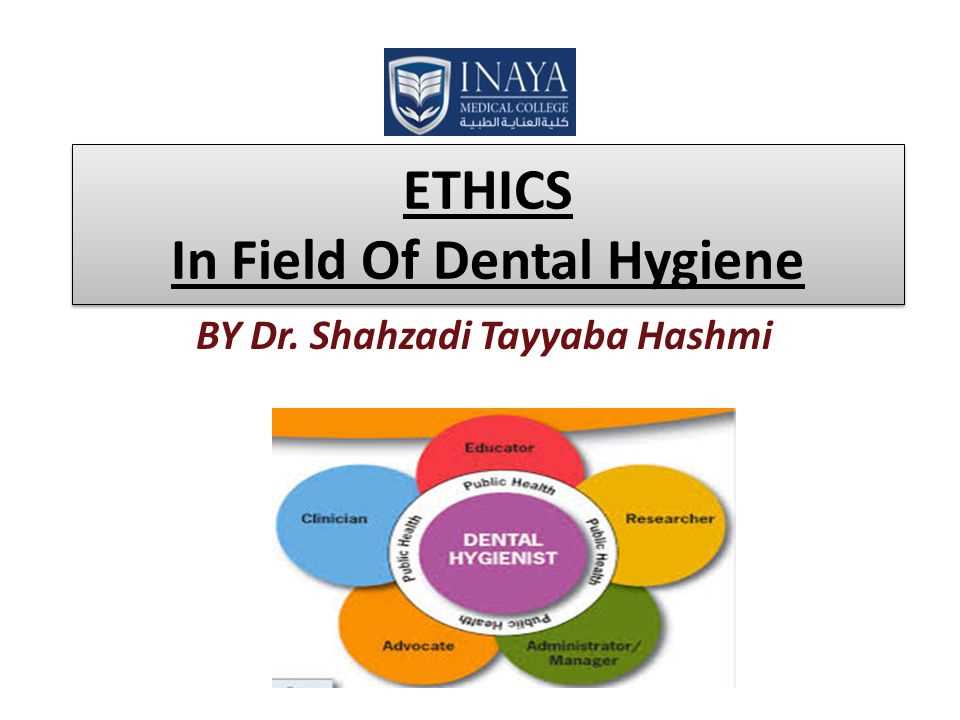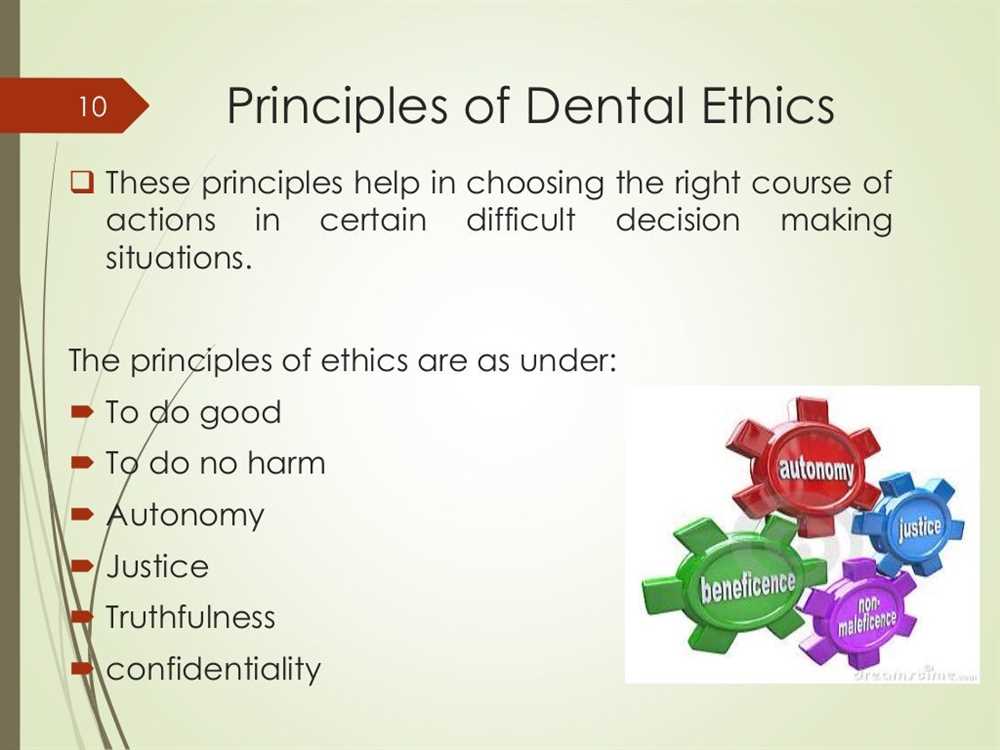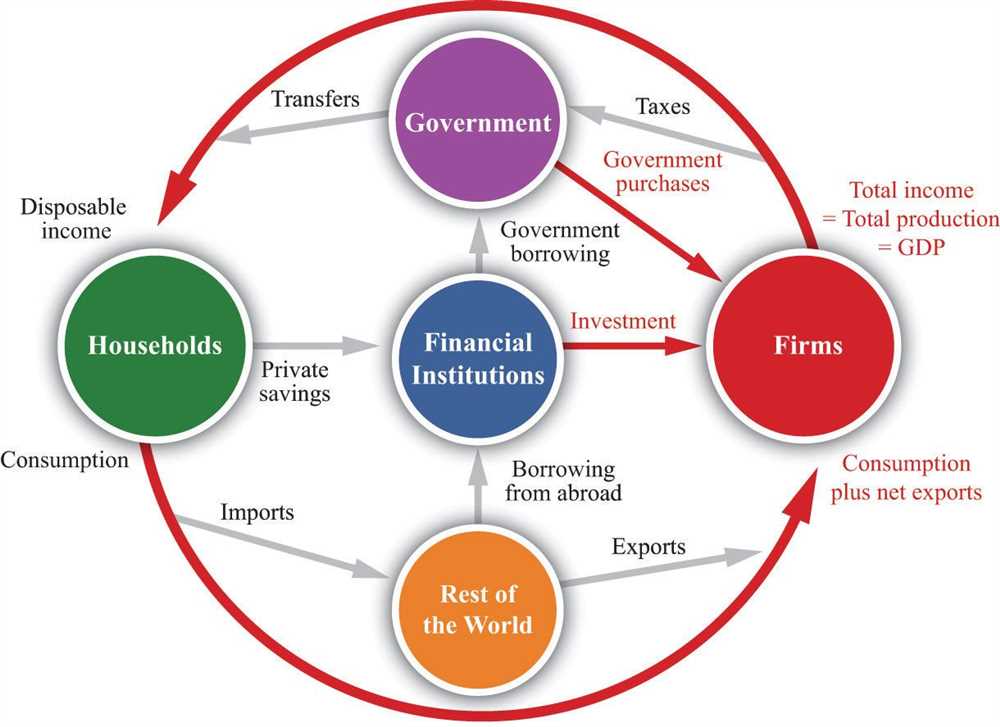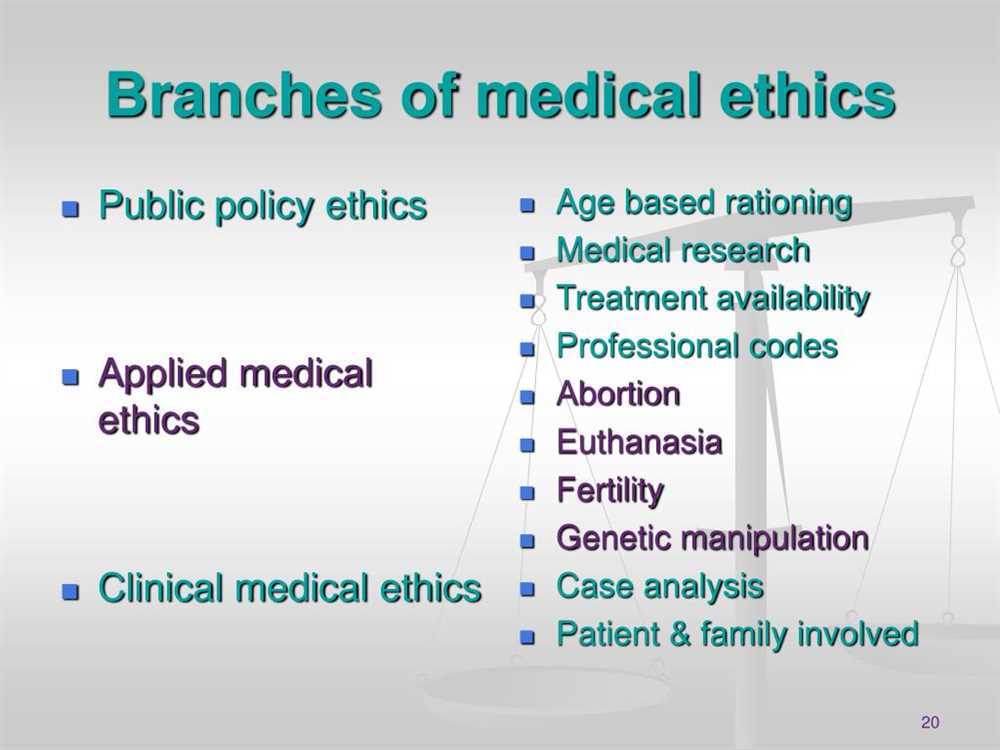
Being a dental professional requires not only technical skills and knowledge but also a strong ethical foundation. Dentists and dental hygienists often encounter ethical scenarios and dilemmas in their practice, where they must navigate the complexities of patient autonomy, beneficence, non-maleficence, and justice. In this article, we will explore various dental ethical scenarios and provide answers that can guide dental professionals in making ethical decisions.
One common ethical scenario in dentistry is informed consent. Dentists must ensure that patients are fully informed about their treatment options, potential risks and benefits, and any alternative treatments available. This not only empowers the patient to make autonomous decisions about their dental care but also builds trust between the dentist and the patient. In cases where a patient is unable to give informed consent, such as underage or mentally incapacitated individuals, dentists must seek consent from a legally authorized representative.
Another ethical dilemma often faced in dental practice is the issue of confidentiality. Dentists and dental hygienists have a duty to protect the privacy of their patients and maintain confidentiality of their personal health information. However, there are situations where breaking confidentiality is necessary, such as when there is a risk to the patient or others. For example, if a dentist suspects child abuse or neglect, they have a legal and ethical duty to report it to the appropriate authorities.
Dental Ethical Scenarios and Answers
In the field of dentistry, ethical dilemmas can arise within various scenarios. These situations require dental professionals to make decisions that uphold the highest ethical standards, prioritize patient well-being, and adhere to legal and professional guidelines. Here are some common dental ethical scenarios and their corresponding answers:
Scenario 1: Patient Confidentiality
A dental professional discovers that a patient has a contagious disease that could potentially harm others. The dentist is torn between maintaining patient confidentiality and protecting the welfare of the public.
Answer: In such cases, the dental professional should consider public health concerns and take appropriate action to prevent transmission of the disease. This might involve seeking the patient’s consent to disclose their condition to relevant authorities or notifying individuals who may have been exposed.
Scenario 2: Conflict of Interest
A dentist recommends a specific treatment to a patient that is more expensive but provides the dentist with a higher profit margin. The dentist is faced with a conflict of interest between their financial gain and the patient’s best interest.
Answer: Dental professionals should always prioritize the well-being of their patients over financial gains. In this scenario, the dentist must fully disclose all treatment options to the patient, discuss the pros and cons of each, and allow the patient to make an informed decision based on their best interest, rather than the dentist’s financial gain.
Scenario 3: Informed Consent
A patient requires a complex dental procedure, but the dentist fails to provide adequate information about the potential risks, benefits, and alternatives involved. The patient feels uninformed and unsure about the treatment plan.
Answer: Informed consent is crucial in dental practice, and patients have the right to understand the risks and benefits of their treatment options. The dentist should provide comprehensive information to the patient, including possible complications, alternative treatments, and the potential outcomes. The patient’s consent should be obtained only after they have a clear understanding of the proposed treatment.
Scenario 4: Professional boundaries
A dental professional develops a personal relationship with a patient outside of the clinical setting. This relationship blurs the boundaries between professional and personal, potentially compromising the patient-dentist relationship.
Answer: Maintaining professional boundaries is essential in dental practice to ensure clinical objectivity and patient trust. In this scenario, the dental professional must establish clear boundaries and avoid engaging in personal relationships with patients that may compromise their professional judgment or create conflicts of interest.
By addressing ethical scenarios in dentistry, dental professionals can navigate complex situations with integrity, prioritize patient well-being, and maintain the trust and ethical standards of the dental profession.
Scenario 1: Patient Confidentiality
Ensuring patient confidentiality is a fundamental aspect of dental ethics. Dentists have a legal and ethical obligation to protect their patients’ private information. This includes personal details and any information related to their dental treatments. Breaching patient confidentiality can not only lead to legal consequences but also damage the trust between the dentist and the patient.
During a routine dental appointment, a patient confides in their dentist about a recent positive diagnosis for a sexually transmitted infection (STI). The patient explicitly requests that this information be kept confidential. In this scenario, it is crucial for the dentist to respect the patient’s wishes and maintain strict confidentiality.
- Ethical response: The dentist must ensure that the patient’s STI diagnosis is not disclosed to anyone without the patient’s explicit consent. This information should not be shared with other dental staff, family members, or insurance companies, unless the patient provides authorization.
- Legal implications: There are legal obligations to maintain patient confidentiality. Dentists are bound by the Health Insurance Portability and Accountability Act (HIPAA) in the United States, which protects patient privacy and restricts the sharing of medical information.
- Professional responsibility: Dentists are ethically obligated to prioritize the well-being of their patients and respect their autonomy. In this scenario, the dentist should consider discussing additional tests or treatments related to the STI diagnosis privately with the patient, ensuring their privacy is maintained throughout the process.
Dental Ethical Scenarios and Answers: Scenario 2: Informed Consent

Informed consent is a fundamental ethical principle in dental practice. It ensures that patients actively participate in the decision-making process regarding their dental treatment. In this scenario, a patient visits a dental clinic for a routine dental check-up, but the dentist notices a cavity that requires immediate treatment. The dentist should explain the procedure, potential risks, and benefits to the patient in a language that the patient can understand.
Patient: I’m here for a routine check-up. Is everything alright?
Dentist: During the examination, I noticed a cavity in one of your teeth that needs to be treated as soon as possible. It’s a relatively straightforward procedure called a dental filling. We will remove the decayed part of the tooth and fill it with a tooth-colored material to restore its shape and function.
The dentist should then explain the potential risks, which may include sensitivity or discomfort after the procedure, and the benefits of the dental filling, such as preventing further decay and preserving the tooth’s integrity. The dentist should also discuss alternative treatment options, if applicable, and allow the patient to ask questions and seek clarification.
Patient: Will I experience any pain during or after the procedure?
Dentist: It’s possible to feel some discomfort or sensitivity during the procedure. However, we will administer local anesthesia to numb the area before starting, so you shouldn’t feel any pain during the treatment. After the procedure, you might experience mild sensitivity for a few days, but it will subside gradually.
Obtaining the patient’s informed consent requires ensuring they understand the nature of the treatment, its potential risks and benefits, and the alternatives. The dentist should document the patient’s consent in their dental records, and the patient may be asked to sign a consent form.
Dentist: Now that you understand the procedure and its potential risks and benefits, are you comfortable proceeding with the dental filling?
Patient: Yes, I understand and agree to proceed with the treatment.
Informed consent is an ethical responsibility that empowers patients to make informed decisions about their dental care. Dentists must uphold this principle to respect patient autonomy and maintain trust in the dentist-patient relationship.
Scenario 3: Professional Boundaries

Professional boundaries play a crucial role in maintaining ethical conduct in the dental profession. In Scenario 3, a dental assistant is faced with a situation where a patient starts sharing personal information that is unrelated to their dental treatment. The dental assistant must navigate this situation while maintaining professional boundaries.
The Scenario:
A patient, during their dental appointment, begins discussing personal relationship problems and asks the dental assistant for advice. The dental assistant is unsure how to respond as this topic is outside the scope of their professional role. They want to be helpful but also recognize the importance of maintaining professional boundaries.
The Response:
The dental assistant should acknowledge the patient’s concerns and empathize with their situation, but clearly establish that their role is limited to providing dental care. They can politely state that they are not qualified to address personal relationship issues and redirect the conversation back to the patient’s dental concerns.
It is important for dental professionals to maintain professional boundaries to ensure patient safety and trust. Engaging in discussions outside the scope of dentistry can lead to misunderstandings, breaches in confidentiality, and potential harm to the dentist-patient relationship. By respectfully redirecting the conversation back to dental matters, the dental assistant demonstrates professionalism and reinforces the importance of maintaining professional boundaries.
Scenario 4: Billing Practices

In the dental industry, it is essential for practitioners to ensure ethical billing practices to maintain trust and transparency with their patients. Scenario 4 presents a situation where a dentist is facing a dilemma regarding billing a patient for a procedure that was not explicitly discussed during a previous appointment.
The dental office receives a call from a patient who had a routine cleaning a month ago and is now requesting clarification on a charge that they noticed on their insurance statement. The patient claims that they were never informed about this additional service and feels that they should not be liable for the cost. The office manager investigates the situation and finds that the dentist had indeed performed a non-routine procedure during the cleaning appointment.
- Ethical Dilemma: Should the dental office bill the patient for the procedure that was not explicitly discussed during the appointment?
In this scenario, it is crucial for the dentist to address the ethical dilemma appropriately. The first step would be to examine the patient’s dental records to ensure accuracy and determine whether or not the procedure was necessary for the patient’s oral health. If it is confirmed that the procedure was necessary, it is important for the dentist to have an open and honest conversation with the patient.
The dentist should explain the reasons behind the procedure and apologize for any miscommunication that may have occurred during the appointment. It is essential for the dentist to take responsibility for the lack of discussion about the additional service and assure the patient that measures will be taken to improve communication in the future.
However, in this situation, it would be ethical for the dental office to waive the cost of the non-routine procedure as a gesture of goodwill. By doing so, the dental office demonstrates their commitment to patient satisfaction and ethical billing practices. This act of waiving the cost not only maintains trust with the patient but also upholds the integrity of the dental profession.
Scenario 5: Advertising and Marketing
In the dental industry, advertising and marketing play a crucial role in reaching and attracting new patients. However, ethical concerns can arise when marketing tactics prioritize profit over patient well-being and integrity.
Scenario: A dental clinic launches an aggressive marketing campaign claiming to offer “the fastest and cheapest teeth whitening treatment in town”. The advertisements highlight the low cost and emphasize quick results.
In this scenario, the dental clinic is engaging in unethical practices by prioritizing profit and potentially misleading patients. While it may be true that they offer teeth whitening at a lower cost and faster timeframe, the emphasis solely on speed and affordability disregards the importance of patient safety and quality of care.
Suggested approach: As a dental professional, it is important to prioritize patient well-being and provide them with accurate information. In this scenario, it would be advisable to communicate with the dental clinic and express concerns about the misleading marketing campaign. Encourage the clinic to revise their advertisements to emphasize the importance of patient safety, quality care, and the experience and expertise of their dental professionals.
- Highlight the potential risks and side effects of teeth whitening treatments, especially when not administered by trained professionals.
- Emphasize the importance of a thorough dental examination prior to any cosmetic procedure.
- Suggest promoting a comprehensive approach to oral health rather than focusing solely on teeth whitening.
By addressing the ethical concerns and advocating for patient well-being, dental professionals can contribute to raising the standard of advertising and marketing practices in the dental industry.
Scenario 6: Treatment Recommendations
In this scenario, a dental hygienist is working with a new patient who has extensive tooth decay and gum disease. The patient is hesitant about receiving treatment and expresses concern about the cost and potential pain involved. The dental hygienist must provide treatment recommendations while respecting the patient’s preferences and financial limitations.
The dental hygienist starts by explaining the importance of treating the tooth decay and gum disease to prevent further complications and tooth loss. They emphasize the long-term benefits of maintaining oral health and the potential risks of delaying or avoiding treatment.
The dental hygienist offers a comprehensive treatment plan to address the patient’s needs. This plan may include:
- Scaling and root planing to remove plaque and tartar buildup and restore gum health
- Filling or crowning decayed teeth to prevent further damage
- Prescribing antibiotics or medicated mouthwashes to combat infection and promote healing
- Providing oral hygiene instructions and recommendations for at-home care
The dental hygienist acknowledges the patient’s concerns about the cost of treatment and pain control. They discuss available financing options, such as dental insurance coverage or payment plans, to help alleviate financial burden. They also reassure the patient that modern dental techniques and local anesthesia can minimize discomfort during procedures.
The dental hygienist emphasizes the importance of open communication and encourages the patient to share their concerns and preferences openly. Together, they can develop a treatment plan that suits the patient’s needs and financial situation while ensuring the best possible oral health outcomes.